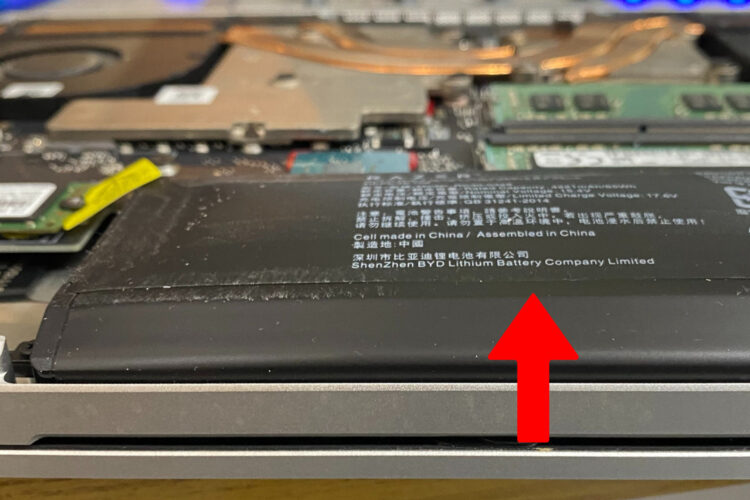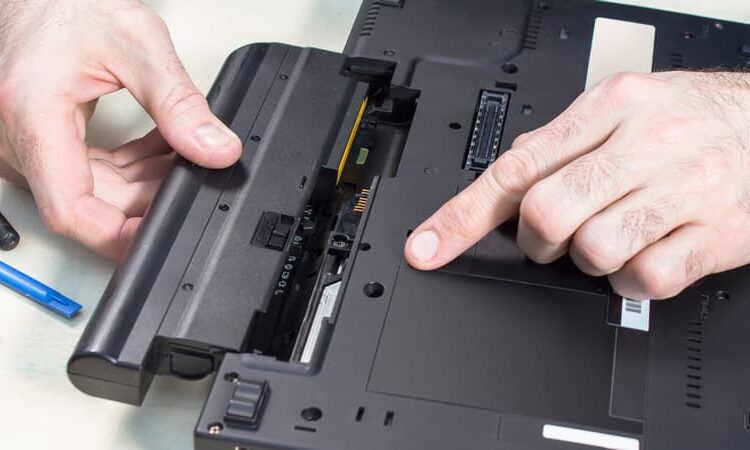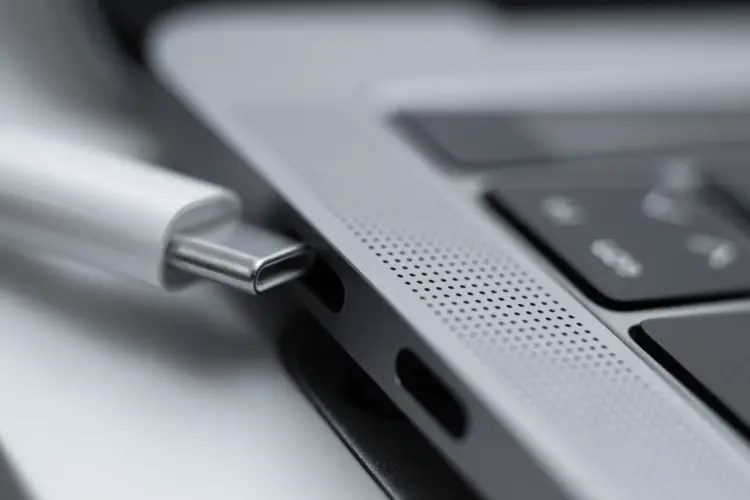
Everything You Need to Know about Laptop Battery 2023
In a world increasingly dependent on technology, the role of laptop battery is undeniably crucial. This blog post navigates the broad universe of laptop batteries, exploring types, technologies, common issues, and their solutions. Our journey delves into the shift to USB-C charging, the phenomenon of battery bloating, the cost of battery replacement, and the laptops with the best battery life. We’ll also discuss why battery size matters and how it impacts laptop repair and battery replacement, a term you’ll come across repeatedly in this comprehensive guide.
1. Different Types of Laptop Batteries
Lithium-ion Batteries is the most common battery type
Laptop batteries come in various types. A popular type is the lithium-ion battery. It’s lightweight and outperforms other batteries. Unlike older types, lithium-ion batteries don’t suffer from the “memory effect.” This effect limits the recharge capacity of some batteries. Thus, lithium-ion is the top pick for laptops. Also, they offer a quick charging option. That’s perfect when you’re in a hurry. Lastly, they’re more eco-friendly than other batteries.
Nickel-cadmium and Nickel-metal Hydride Batteries are the older types of batteries
They once dominated the portable computer industry. However, NiCad isn’t popular for laptops these days. It suffers from the “memory effect.” NiMH batteries last longer than NiCad. However, they also suffer from the memory effect. Some laptops still use NiMH batteries, though. It’s worth checking if a Li-ion upgrade is available for those laptops.
Despite their limitations, you can prolong the life of NiMH batteries. How? By discharging them fully every so often. After four usage, drain, and recharge cycles, do a complete drain. Then, recharge it again. This method can help extend your battery’s lifespan.
Some laptops have additional batteries
There’s a secondary alkaline battery. What’s it for? It powers the laptop’s internal clock. Some laptops also have a third optional battery. This one keeps things powered during main battery replacement.
Risks of Using Unapproved Batteries
You should use approved batteries only. Unapproved batteries pose serious risks. They can lead to dangerous situations. For example, your laptop could catch fire. It could even explode. Therefore, always choose approved batteries for your laptop’s safety.
Remember, a good laptop battery is essential for your laptop’s optimal performance. Don’t neglect battery issues. Whether it’s laptop repair or battery replacement, choose wisely. Keep your laptop powered and ready for use!
2. Laptop Battery Size Does Matter
So, you may ask, why does the size of a laptop battery matter? The answer, in fact, lies in the delicate balance between performance and portability.
Consider this: a large battery often equates to a longer lifespan. After all, it houses more energy, allowing your laptop to run for extended periods. But there’s a trade-off. Larger batteries result in heftier laptops, compromising the very portability that makes laptops so appealing.
For instance, gaming laptops typically have large, high-capacity batteries. They need this power to support intense gaming sessions. But the consequence? These devices weigh significantly more than your average notebook. For some, the extra juice is worth the added weight. For others, it’s a deal-breaker.
Now, let’s look at the opposite end of the spectrum. Ultrabooks and lightweight laptops are a dream to carry. They’re slim, sleek, and highly portable. However, their small size means a smaller battery. Yes, they’re easier on your back, but they may not last through a long flight or a power outage.
Innovators, of course, are not oblivious to this dilemma. They are constantly striving to develop high-capacity batteries that don’t inflate the size or weight of the laptop. We’ve already seen some success in this area with lithium-polymer batteries, which can be made thinner and lighter than their lithium-ion counterparts.
3. Laptop with the best battery life (as of 2023): MacBook Pro 16-inch (M2 Max, 2023) which lasted nearly 19 hours

MacBook Pro 16-inch (M2 Max, 2023). Image credit: Geek Culture
Exceptional in every way, the MacBook Pro 16-inch (M2 Max, 2023) redefines the term ‘endurance’. With a battery life of nearly 19 hours, it outlasts many of its competitors. You may wonder, how can a laptop that’s both slim and lightweight provide such impressive longevity? Let’s delve into the reasons.
First and foremost, Apple’s mastery of hardware and software integration plays a pivotal role. By designing both elements in-house, they ensure seamless operation. This synergy reduces power consumption, contributing significantly to the laptop’s battery longevity.
Next, the M2 Max chip deserves a special mention. It’s the heart of this MacBook Pro, and a true marvel of engineering. The chip follows an ARM-based architecture, which is known for its energy efficiency. It allows for more processing power per watt compared to traditional x86 architectures. Thus, you get excellent performance without draining the battery.
Moreover, Apple implements a system known as ‘power gating’. This technology shuts off power to idle components. So, when you’re not using a particular part of your MacBook, it doesn’t consume energy. A smart move that saves battery life.
Another critical factor is the use of SSDs for storage. Solid-state drives (SSDs) are more energy-efficient than hard disk drives (HDDs). They consume less power, which extends the laptop’s battery life.
Last but not least, let’s not overlook the MacBook Pro’s meticulously engineered design. Despite its slim profile and light weight, the MacBook Pro houses a sizable battery. It’s a testament to Apple’s commitment to innovation, as they consistently manage to fit large capacity batteries into compact chassis.
4. Most Common Laptop Battery Issues Remains Battery Bloating
Battery bloating, also known as battery swelling, is a serious concern. Essentially, it’s a process where a rechargeable battery, such as lithium-ion, expands in size. This occurs due to gas build-up within the battery cell. It’s a clear sign of a problem when you notice your device’s case or cover distorting. Importantly, it’s not just an aesthetic issue, but also a potential danger. If a battery swells, it becomes unstable, and this instability can lead to a fire hazard1.
The Causes of Battery Bloating
Next, we move on to the causes of battery bloating. A common cause is overcharging. Overcharging, simply put, is charging a battery beyond its capacity. This practice can cause harm to the battery’s health. It may also lead to bloating.
Another cause is exposure to high temperatures. Heat can accelerate chemical reactions inside the battery. This may result in gas production. Ultimately, it could cause the battery to bloat.
Lastly, using non-original batteries can also cause bloating. Non-original or counterfeit batteries often lack the quality of original ones. This lack of quality could lead to battery bloating.
Risks Associated with Battery Bloating
What about the risks of battery bloating? Well, a bloated battery can damage the laptop. As the battery swells, it can distort the laptop casing. This distortion can lead to physical damage to the laptop.
Moreover, a bloated battery can be a safety hazard. It can potentially explode and cause injuries. Thus, it’s not something to ignore. If you see signs of bloating, take immediate action.
Steps to Prevent Battery Bloating
So, how can we prevent battery bloating?
- One step is to avoid overcharging. As stated earlier, overcharging can cause bloating. So, unplug your laptop once it’s fully charged.
- Another step is to keep the laptop cool. This can be done by using a cooling pad. Or, you can avoid using the laptop on soft surfaces. These surfaces can block the laptop’s ventilation, causing it to heat up.
- Using original batteries is also important. Non-original batteries can cause various issues, including bloating. So, always use original batteries for your laptop.
5. Timely Battery Replacement Is Crucial
Let’s take a moment to dispel some common myths surrounding battery replacement. Misinformation can often deter laptop owners from making the right decision about replacing their batteries. By clearing up these misconceptions, we aim to encourage timely battery replacement.
Firstly, the myth that “replacing the battery will void the warranty” is widespread.
In reality, most manufacturers won’t void the warranty if you replace the battery. They understand that battery life diminishes over time and replacements become inevitable. Always remember to check the specifics of your warranty, though.
Secondly, another misconception is “my laptop performance won’t improve even after replacing the battery”.
This notion is incorrect. A new battery can significantly boost your laptop’s performance, especially if the old one was causing problems. For instance, unexpected shutdowns, overheating, and slow performance often link back to a failing battery.
Next, some people believe that “only the manufacturer can replace the battery.“
While manufacturers often offer replacement services, many reliable third-party providers can do the job too. They offer quality services at potentially lower costs, making battery replacement more accessible.
Additionally, there’s the belief that “battery replacement is too costly.“
Indeed, there is a cost, but consider the alternative. The cost of replacing a bloated or leaking battery is far less than repairing the damage it can cause to other components of your laptop.
Lastly, the notion that “I can wait until the battery completely dies before replacing it” is risky.
Doing so can lead to severe issues such as data loss, hardware damage, or even safety hazards. Thus, it’s crucial to replace your battery as soon as you notice signs of significant wear.
In conclusion, don’t let misconceptions hold you back from maintaining your laptop’s health. Timely battery replacement is a simple, preventative step that can extend your laptop’s lifespan and improve its performance. After all, a well-functioning laptop is the key to uninterrupted productivity and enjoyable digital experiences.
6. The Right Way to Juice Up Your Laptop Battery
Next, let’s explore the optimal methods to charge your laptop battery. It’s essential to know the right charging practices to maintain the health and longevity of your battery.
Firstly, avoid draining your battery completely before charging it. Contrary to popular belief, “deep discharges” can put stress on the battery, leading to a shorter lifespan. So, plug in your charger when the battery level drops to around 20%.
Secondly, don’t keep your laptop plugged in at 100%. Constantly charging a full battery generates heat, which can damage the battery over time. Try to unplug once your battery reaches a charge between 80-90%.
However, there’s an exception to this rule. If you primarily use your laptop as a desktop replacement and keep it plugged in most of the time, modern laptops have built-in mechanisms to prevent overcharging. They let the battery discharge a bit even when plugged in.
Thirdly, try to keep your laptop cool. High temperatures can degrade your battery faster. Avoid placing your laptop on soft surfaces like cushions or beds, as this can block ventilation and cause overheating.
Lastly, periodically calibrate your battery. Over time, the laptop’s battery meter can become unaligned, displaying inaccurate readings. To recalibrate, charge your laptop to 100%, let it drain to about 5%, and then charge it back up to 100% again. Repeat this process every 2-3 months.
7. The Shift to USB-C Charging: Why People are Investing in 65W and 110W Chargers
Let’s cast our gaze on a rising phenomenon in the tech world – the shift to USB-C charging. USB-C is not just a conduit for data transfer. It’s a new dawn for power delivery, reshaping the way we charge our laptops.
Firstly, USB-C offers impressive speed
It surpasses traditional charging methods, powering up your devices swiftly. Hence, it slashes the time you spend anchored to a power outlet, giving you added freedom and mobility with your laptop.
Another key advantage of USB-C is its universal compatibility.
The beauty of it is that it’s one-size-fits-all. Imagine this: you’re traveling for a business conference. Instead of stuffing your bag with different chargers for your laptop, smartphone, and tablet, you bring one USB-C charger. That’s it. It’s a game-changer that eliminates clutter and simplifies your tech life.
The connectors of USB-C cables are compact and sleek
This slim design aligns with the push for lighter, thinner laptops. It also bolsters portability, a boon for those who are constantly on the move.
Growing popularity of 65W and 110W USB-C chargers
Now, on to the specifics of 65W and 110W USB-C chargers. These high-wattage chargers are becoming a hit, and for good reasons. They promise quicker charging times, slashing the downtime of your laptop.
Not to mention, these chargers cater well to power-intensive laptops. Many high-performance laptops require more than the standard 45W most USB-C chargers provide. Hence, 65W and 110W chargers make the cut for these energy-hungry devices.
In the broader context of laptop repair and battery replacement, the advent of USB-C technology holds substantial implications. As we shift to USB-C charging, it necessitates changes in batteries and charging circuits. It could reshape repair techniques, alter costs, and stir new trends in the market.
8. The Rising Trend of Dual Laptop Batteries
Now, let’s turn our attention to a promising trend in the laptop battery universe – the emergence of dual laptop batteries. This setup involves integrating two batteries into a single laptop, doubling the power and the possibilities.
Firstly, let’s talk about the most obvious benefit: enhanced battery life. With two batteries at work, your laptop can operate longer between charges. For professionals and students who rely heavily on their laptops, this increased battery life can be a game-changer.
Next, consider the redundancy factor. With two batteries, if one starts to fail, the other can take over. This redundancy offers a safety net that can save you from abrupt shutdowns, loss of work, or other inconveniences that arise from a failing battery.
Interestingly, dual battery systems also offer a unique power management advantage. With smart software, these systems can cycle between batteries, distributing the wear evenly. This approach extends the overall lifespan of both batteries, delaying the need for replacements.
Despite these benefits, keep in mind that a dual battery system may add weight to your laptop. While advancements are making batteries lighter and more efficient, two batteries will invariably weigh more than one. So, there’s a trade-off to consider.
In conclusion, dual laptop batteries offer an exciting advancement in battery technology. They promise extended battery life, redundancy, and smart power management. Though a bit heavier, for many users, the benefits of a dual battery system far outweigh the extra grams. It’s a trend worth watching as we move into the future of laptop design and technology.
Conclusion
In closing, the evolution of laptop batteries continues to shape our experiences with technology. From the types of batteries to charging technologies, every aspect plays a vital role in laptop performance and longevity. The adoption of USB-C and advancements in battery design to tackle issues like bloating and size are exciting trends to watch. Lastly, always remember the importance of professional laptop repair and battery replacement services. Regular maintenance can ensure your laptop runs efficiently and lasts longer, giving you the best return on your investment.
Don’t wait until your laptop battery begins to fail. Stay proactive, give your laptop the care it deserves. If you’re in Singapore and considering a battery check-up or replacement, don’t hesitate. Reach out to VOLTA PC Upgrade & Repair (FKA Budget PC Repair). Our team of skilled professionals is ready to ensure your laptop performs at its peak. Remember, timely battery maintenance is not just a repair, it’s an upgrade for your productivity and peace of mind.
Follow our Socials:
![]() : @budgetpcrepairupgrade
: @budgetpcrepairupgrade ![]() @budgetpcrepair
@budgetpcrepair ![]() : @budgetpc
: @budgetpc



